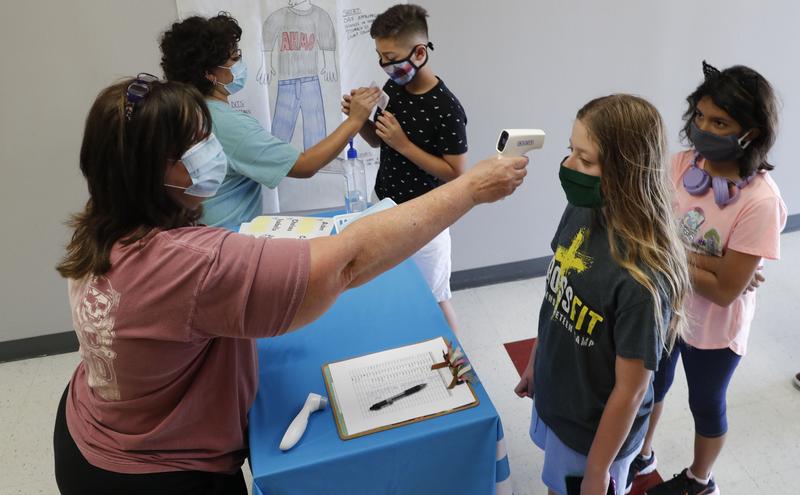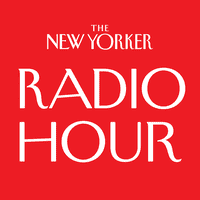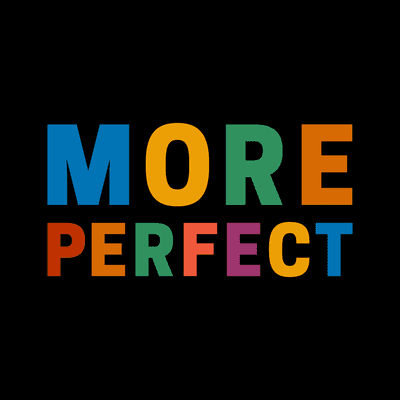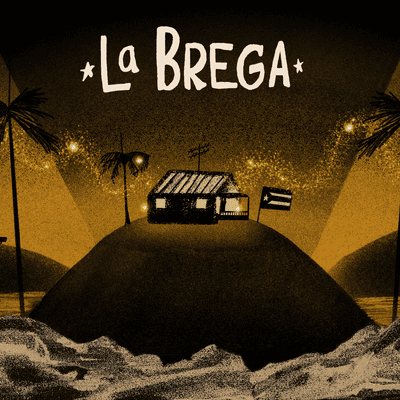Emily Oster on Whether and How to Reopen Schools

[music]
Host: As summer marches on and fall comes into view, the question of schools is coming into sharp focus, a debate, a full-on battle really is raging about whether schools should reopen their doors for kids?
Ms McEnany: Yes, the president has said unmistakably that he wants schools to open, and I was just in the oval talking to him about that, and when he says open, he means open in full, kids being able to attend each and every day at their school. The science should not stand in the way of this.
Host: If you are the teacher standing face-to-face with 35 kids, or if you're a principal for that matter or an education official or a governor, you may want to consider the science, but that gets tricky. This pandemic is not much more than half a year old, and there's no definitive set of data to guide us. What do we know about this seemingly impossible problem? The New Yorker's Joshua Rothman talk last week with Emily Oster, an economist at Brown University. Oster has written best-sellers on pregnancy and parenting from a database perspective and she coauthors the website COVID Explained.
Joshua Rothman: Maybe we should start with the first of three questions, which is, how dangerous is the coronavirus to children?
Emily Oster: I think the answer is that this is the least affected group. That's different than saying it's not dangerous, and some of the things you will hear are people saying, "Oh, kids can't get it. Kids don't get it. No kids ever get it." That's not true. Kids can get it. They can get very sick. There have been pediatric deaths. We have now have a lot of data from a lot of different locations that really suggest that kids tend to have mild illness and they are less likely to get sick. I think that piece of it is pretty reassuring.
Joshua Rothman: Does anyone know why? Why would that be?
Emily Oster: There's some discussion, and now we're a little bit beyond my science skills, but there are some discussions about ACE2 inhibitors and different levels of ACE2 enzymes, but I don't think we really have an answer to that question yet.
Joshua Rothman: Yes. One thing I've been low key freaking out about for myself, I have a two-year-old son and our version of this debate was sending him to pre-K and I had read the papers about how basically the scary, scary version of COVID is something that kids don't really seem to get in any significant numbers, but then I was starting to learn about there are things that happen decades after you get a virus, like shingles is a consequence of chickenpox or there are various weird things that happen 10 years after you get the measles. How do you think about it being an unknown virus, I guess is what I'm asking, or a new weird creepy virus?
Emily Oster: I think that is part of what's hard is that people are sort of constantly running through their heads, "Well, what if in 20 years we find out that this had this long-term impact that we didn't know about it?" I think, yes, you're right that that's really scary. Now, that's always true. You're frequently experiencing things where we don't really know, or experiencing these where we do know that there are potentially long-term consequences like the flu.
Flu is actually way more dangerous than COVID for kids based on the data. You're already taking some of these risks and I think that they're just not really salient every day, but the fact that there could be something bad that happens later is hard to factor into your decision making because, of course, there could always be something bad that happens later and you cannot wait 20 years to decide whether to send your two-year-old to daycare.
Joshua Rothman: Yes, that totally makes sense. What about kids being vectors or giving the virus to each other?
Emily Oster: This is a place where I think we have growing data, but it is actually more complicated and it's less obvious than the case of how sick kids get. For a while, there were some discussion like kids don't transmit. They don't transmit at all, so we shouldn't worry about that. I think what is true is they do seem to transmit less. We have a number of examples that are reassuring. Cases where there was an infected kid and they interacted with a lot of other people and nobody got sick.
I think our best data on this probably just came out and it's a little bit mixed. There's a big study from South Korea which looked at a bunch of cases and then looked at their contacts. South Korea does much better contact tracing than elsewhere. They had traced, they had 6,000 cases and 60,000 contacts, to put some numbers on it.
If you have a little kid in the study who has COVID, that's a kid under 10, they find only about 5% of their parents or people they live with get COVID. That's a really low transmission rate. It's much lower than other groups. Adults look like the transmission rate there would be something like 11% or 12%. That would say adults would transmit to 11% to 12% of people in their household.
For kids in their teens, that's the 10 to 19 age group, they were still much less likely to be infected than other people in the population but conditional on being affected, they transmitted to their household contact at a rate that was similar to adults. There's a little bit of a mixed bag for the older kids and suggest there's an important difference between the younger and the older age groups within kids.
Joshua Rothman: Does that suggest that we should be having two pretty distinct conversations, like one about high school kids, essentially how to keep those schools closed, and then one about elementary school kids and essentially how to open those schools?
Emily Oster: Yes, I don't think it's unreasonable to say that we should privilege different groups differently for this reopening conversation. One of the ways we could do that is with age, and we could say, basically we should be thinking about how to open for elementary school kids and maybe about how to use space in high schools or in middle schools to de-densify our elementary school classrooms.
The other piece of this that lines up well with that kind of plan is the distance learning losses, like how good is distance learning is pretty different for little kids and for older kids. It's not that easy to teach a five-year-old on Zoom, and also some of what you're trying to convey is how do you interact with other five-year-olds? Whereas for high school kids, of course, socialization is important. It's easier for them to socialize on their own, and also the learning piece it's easier to do on the computer. I think that that's not crazy. That's not crazy.
I think the other place that we should be talking about prioritization is to just recognize that people have different resources. Within a bunch of sixth-graders in a large urban school district, you're going to have kids where their parents can be home with them and they are capable of supervising them doing online learning, and then you're going to have cases where kids live in homeless shelters or in other kinds of unstable environments with no internet, and we should prioritize those kids for in-person education if we have to choose, I think.
Joshua Rothman: Then on the third question, which is, adults who work in schools giving it to one another, what do we know about that?
Emily Oster: I think that what we know about that is the same as what we would know about this in any kind of office setting, and I think we have to think the same would need to be true about schools. We can't have faculty break rooms. We can't have faculty kitchens. We're going to need to think about PPE. There's a lot of those kinds of considerations that are going to opening offices that I haven't seen talked about as much in the cases of schools.
We've spent a lot of time in schools and sort of thinking about the protections that have to do with interactions between teachers or between staff and students, and much less about the interactions between staff and staff, which of course probably are the highest risk interactions because those are the people who are most likely to spread it to each other.
Joshua Rothman: I imagine you as a person who's just at the center of a huge amount of communication from parents, from teachers, from education people about this problem, this question. I guess part of it is, well, there were a lot of people thinking that, in a wishful thinking way that this would just automatically be over by at some point in the summer, and maybe this is just one of those decisions that's so hard to make. You can't guarantee anything to anybody.
Emily Oster: I think one of the things places thought that they were going to be able to somehow think about this in a cost and benefit trade-off way, and then it became very emotional in a way that maybe wasn't expected and makes it very hard to make decisions like that. When you announced that you're going to reopen schools and then people are like, "Do you want me to die?" Basically, when the teacher's union comes and they say like, "Do you want me to die? You're going to make me go to work so I can die."
Then you realize, as an administrator, if you reopen schools, in fact, even if you don't reopen schools, in general, there will be some people who are teachers who unfortunately will die because a lot of people are going to die of COVID because it is a terrible disease that we really need to be addressing more aggressively. What's going to happen if you open schools is that some people are going to get this and some of them may die, and then what are you going to do? I think that was the thing that people came up against that they maybe weren't expecting.
Joshua Rothman: Normally, this is in fact, on some level, it's a life and death decision, even though on another level it's about-- Well, let me frame it a different way. How much do we know about what it means for kids to miss a year of school? Is that something we know about? Like what the impacts are on children who are out of school for a year?
Emily Oster: Yes. I think we know that it is really bad for kids to lose out on schooling. We know that there were very large learning losses in the spring. Those learning losses are concentrated in students of color and low-income students. They're concentrated in low-income schools. You can see this in the data. It's comparable, it's the same thing we see when we look at summer learning loss.
If we go online for a school year, and things are anything like they were in the spring. There are going to be a bunch of kids who drop out. Those are going to be from particular demographic groups. We're going to see basically an exacerbation of some pre-existing inequalities. We saw this today, all of my Twitter feed today is about educational pods. Oh, we're going to have a learning pod. We're going to have a learning bubble. Guess who's having learning bubbles? It's the rich, or at least, people who are relatively better off than the average.
I think all of this stuff is going to be very bad in the long term. We know that people who get less education have worse health outcomes later, make less money, have all kinds of other long-term impacts. I have made this point in various ways. One of the pieces of pushback you get is, it would be worse to be dead. If you open schools and even one kid dies of COVID as a result of school openings, then that's worse than all of these learning losses.
We don't really have a way to talk about how we trade those things off. Economists have a framework, but it's the reason that people hate us, because we're going to go out there and say, "Well, the long run, like higher mortality among this entire cohort of students outweighs the life years lost of one student dying of COVID." Nobody wants to be out there saying, and I don't want to be saying that. Nobody wants to say that, and I think that that's part of what makes this just really hard to talk about.
Joshua Rothman: Would it be better for school districts to just decide now, very clearly, to avoid being the flat squirrel and just decide, we're going to pursue opening and then there are certain consequences that flow from that in terms of decisions that need to be made or to decide we're going to be as conservative as possible and then pull all your resources into making it work that way? Is flip-flopping bad here?
Emily Oster: Yes, flip-flopping is bad. I think this is something a lot of school districts had this attitude of, "We're just going to wait as long as possible to have as most information as possible," and I think it was driving parents crazy. There actually are a number of people, even in California, where-- so I texted a friend of mine the other day and I was like, "I'm so sorry that LA has decided not to open." She was basically like, "I just am glad that I know, because now-- yes, I wish we could be in-person, but now at least I understand what I'm up against."
Parents were like, "Okay, let me try to think about how am I going to make this work?" The piece that I'm worried about from-- just to tell you about what is keeping me personally up at night about my life, is that I live in a place where there's currently the plan is to open schools in-person, like more or less full time, at least for elementary schools, but I am worried that we're going to get two weeks in and there's going to be a case in my kid's school. Realistically, that's even a low prevalent place, that's going to happen.
Then I'm not sure what the plans are in terms of the reaction. It would almost be worse to send the kids back for two weeks and then have to pull them out again because I wouldn't be prepared for that.
Joshua Rothman: What if you lived in a state, a state where you just didn't trust the decision-making about coronavirus? I think that's a situation a lot of parents around the country are in or worry that they may be in. This is one of these weird moments where everyone is making their own judgment calls about what's safe, what's acceptable, I guess.
Emily Oster: I think that, in that case, a lot of people are going to be thinking about it as, "This is not a good idea to send my kid." I suspect that I would be in the same boat. I'm pretty into school, and so I'd really like my kids to be in school, but I'm not sure that, from a public health standpoint, I could really decide to send them, even if I wasn't worried about them at all. I'm not sure it would be a good idea to decide to send them in a place where a lot of people are being infected every day. Partly because I would just feel like that was not socially the choice that I would make.
I also think we're going to have to accept that there isn't actually a right choice, in that people are going to differ in what they think is the right thing to do. That we probably, it's not going to help any of this discourse for people to yell at each other and tell them they're doing it wrong. It's hard to put yourself in other people's shoes on those choices.
Host: Emily Oster, an economist from Brown University. She's also the author of Cribsheet and Expecting Better. She spoke with the New Yorkers, Josh Roth.
[music]
Copyright © 2021 New York Public Radio. All rights reserved. Visit our website terms of use at www.wnyc.org for further information.
New York Public Radio transcripts are created on a rush deadline, often by contractors. This text may not be in its final form and may be updated or revised in the future. Accuracy and availability may vary. The authoritative record of New York Public Radio’s programming is the audio record.





